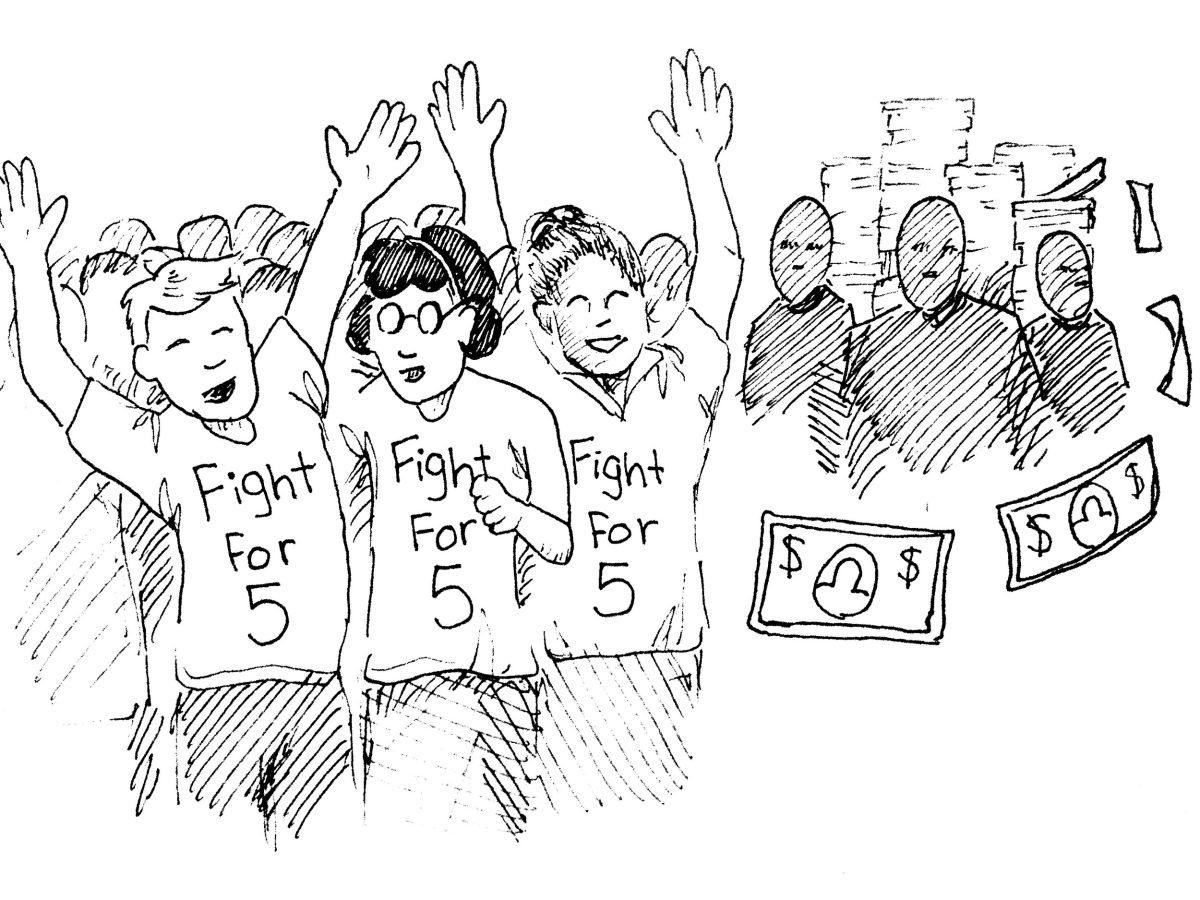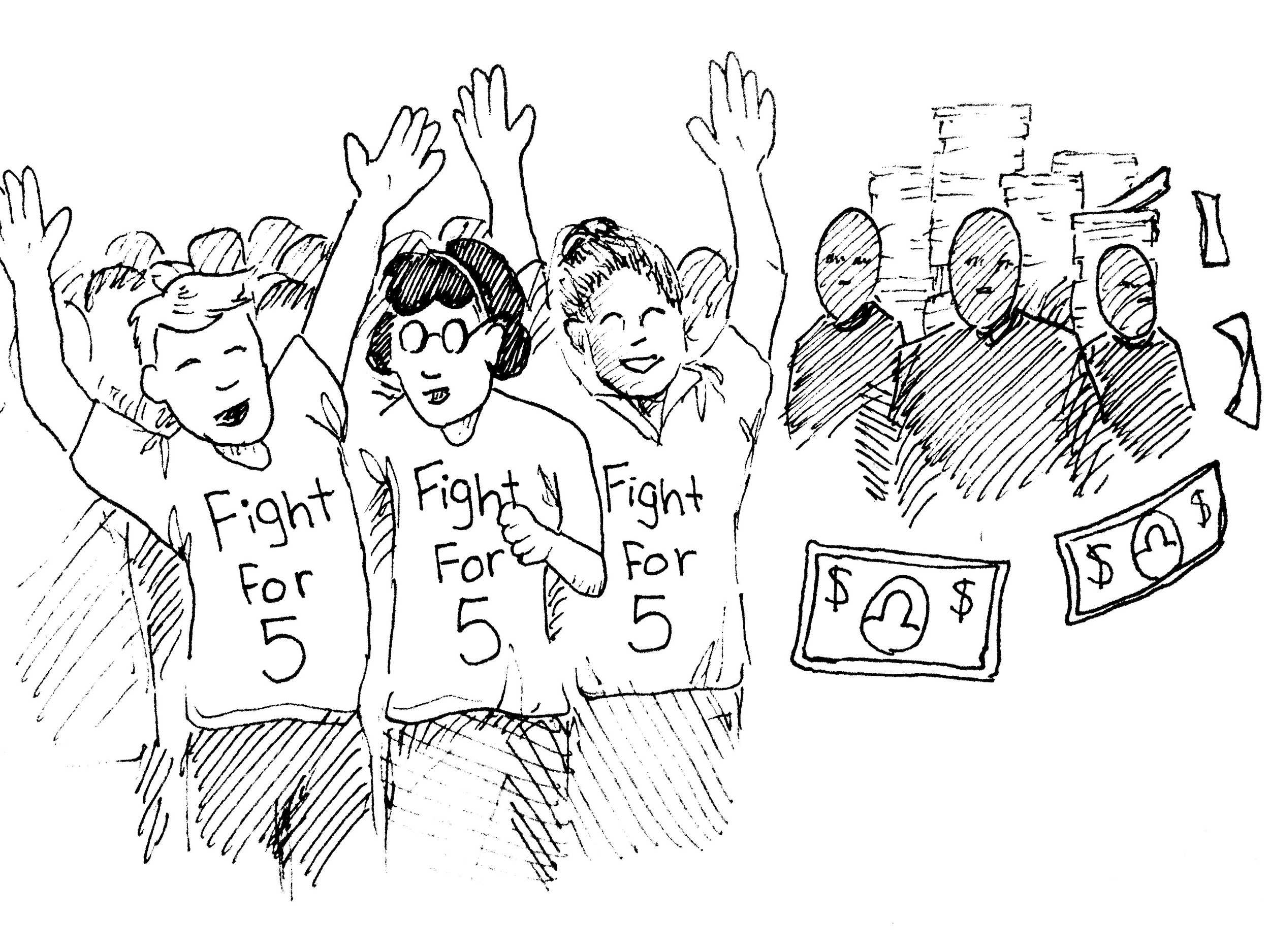STAR // Julia Albo
A faculty strike slated to begin on Wednesday at Sonoma State and the other campuses in the CSU system was put on hold as a result of a tentative contract agreement reached between the CSU system and the California Faculty Association. The faculty seems to get everything they asked for and more, but this didn’t come without compromise.
The CFA was demanding an immediate 5 percent raise for all active professors while the CSU was only offering a 2 percent increase. As written in the agreement announced on Thursday, all active faculty could receive a 10.5 percent salary increase over the next three years if the settlement is ratified.
However, some compromises were made. Starting with faculty hired on or after July 1, 2017, the vesting period will be doubled. This means faculty will need to have worked for the CSU for 10 years instead of five to retire with full health benefits if they were hired on or after that date. Also, the wording of the statement isn’t retroactive, meaning the salary raise won’t apply to the pay the faculty receives before June 30.
This agreement was reached after a neutral fact-finding report was published. This report, executed by factfinder Bonnie Castrey, found the faculty was underpaid for several factors and suggested the CSU increase salaries.
This resolution came as a surprise to many, since only in March did the University Panel claim the raise faculty were asking for would require funding they didn’t have. The chancellor claimed in a conference call regarding the agreement on Friday that the CSU did in fact have the budget for at least a 6 percent increase to implement immediately.
We’re glad the faculty got the raises they deserved. But if the CSU already had the money, why did the tensions go on so long before it agreed to 5 percent?
Perhaps it took the CFA to show its teeth long enough for the CSU to budge. Sonoma State CFA Chapter President Elaine Newman believes the CSU didn’t account for the strength of faculty and the amount of support they would end up receiving from the students.
Between the apparent wiggle room in the budget and the comparison of the administrators’ salaries, it’s clear this agreement is far overdue. Newman agrees this raise is a step in the right direction, although it’s not a perfect agreement.
The salary gap between the CSU administration and the CSU faculty has been growing for years. Sonoma State President Ruben Armiñana’s salary has been raised every year, consistently since 2007, totalling an $33,000 increase in salary over the last nine years, according to a state worker’s salary database, while the faculty hasn’t seen an increase in pay in ten years. Armiñana isn’t the only one who has seen a salary increase of this scale; CSU Chancellor Timothy White has seen a $52,000 salary increase in just the last three years, with his total salary currently at $416,000 a year.
That’s almost three and a half times the maximum salary for a professor at Sonoma State. Why are the administrators consistently getting raises while the faculty had to threaten to fight for 5 percent?
The settlement is good for the current faculty, but will the administration find a way around it by gravitating more toward hiring part-time lecturers?
According to Sonoma State’s “Quick Facts,” 60.2 percent of the faculty are already temporary lecturers. The salaries for these lecturers range by the amount of classes they teach, but the salary can be anywhere from $13,000 to a maximum of approximately $57,000. Sonoma State is already gravitating towards these part-time faculty, and the higher salaries in this tentative agreement could push administration even further into hiring more temporary professors.
This is harmful for two reasons. According to MIT’s “Living Wage Calculator,” the cost of living in Sonoma County for an average family of two adults and two children is roughly $53,400 a year. For part-time professors, the salary cap is just above that, and most of them are paid well below $50,000.
This would mean they either need another job or be dangerously close to the poverty line. The other issue with temporary staff is the lack of consistency for students. A part-time professor can’t consistently offer the same classes every semester the same way full-time faculty can.
Overall, the tentative agreement shows the CSU is starting to invest more in its faculty, which ultimately boosts the morale of the students and community. Well-paid faculty should equate to a better learning environment for the students. Also, avoiding the strike was the best action for the general atmosphere on campus.
This tentative agreement may have halted the strike, but the discussion isn’t over yet.





![[Both photos courtesy of sonoma.edu]
Ming-Ting Mike Lee stepped in as the new SSU president following Sakakis resignation in July 2022](https://sonomastatestar.com/wp-content/uploads/2024/04/CC4520AB-22A7-41B2-9F6F-2A2D5F76A28C-1200x1200.jpeg)



























